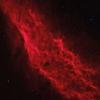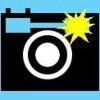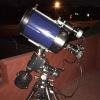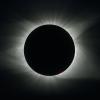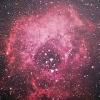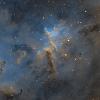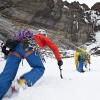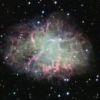I've used and enjoyed my Pentax K-1000, Olympus OM-1, Canon Rebel first edition and my Canon 20D DSLR. The DSLR works great and has less than 4000 images on it. I was recently looking at new DSLR options and discovered another quantum shift has occurred in cameras. Since I intend to use the new camera for astrophotography as well as terrestrial I figured I'd start here.
I'd like to stick with Canon if possible so I can continue to use my current lens collection acquired over the last 30 years. I see many newer cameras don't even have view finders anymore so comments on focusing these cameras would be appreciated. I know that older screens can be difficult to see in strong lighting and white light obviously affects night vision. Anything else I might need to consider?
Given today's advancement in imaging tech for astrophotography, it occurs to me that it might even be an option today to have a stand alone astro camera that fits 1.25"- 2" focusers and just continue to use my Canon 20D for terrestrial work. I really have not kept up with digital imaging options or tech since I bought the 20D twenty years ago. Thoughts? Thank you.
Although you can get a new Canon mirrorless (which no longer uses the EOS mount), the EOS mount is so prevalent that there are powered adapters for other mirrorless bodies like Sony, Fuji, and Nikon that allow you to use your autofocus EOS lenses on their bodies. So if there is a body from Nikon, Fuji, or Sony that you may find attractive, you can still use your lenses on them.
Not all mirrorless cameras are without viewfinders, many have electronic viewfinders. The newer models are better than older, especially for action photography.
Although yes you can use a DSLR or mirrorless camera for astrophotography, and you may initially want to start this way, you would indeed be better off investing in a separate astro camera for astrophotography.
You can indeed get a dedicated astro camera that can slide into the eyepiece of a telescope, but besides possible vignetting depending on sensor size, for serious imaging with these cameras they should be screwed directly to the scope to maintain axial alignment with the optics, which won't occur sliding one into the eyepiece mount. A popular astro camera is one based around the square format Sony IMX533 sensor, such as this one. The use of an off-axis guider (OAG) with it's separate guide camera, is recommended as well for autoguiding. The mount, main imaging camera, and guide camera are all controlled by a laptop or compact computer. You could additionally get a focus motor, also controlled by the computer, for continuous auto focusing through the course of the evening to compensate for temperature and mechanical shifts. The various software available, such as NINA, APT, and Ekos, will control all the equipment, and other programs, such as Siril and PixInsight, will process that data you have captured into the final image you will share.
I can imagine that all I've mentioned so far is rather overwhelming for you at the moment, but a little time spent, both here and around the internet, especially on YouTube, will help to you to understand the interrelationship of all these components, and allow you to make proper decisions as to what you want to invest in, and in what gradual manner. You may want to peruse some of the basic astrophotography videos on YouTube to start getting a feel for modern practices.
I would suggest getting a newer, more modern but used Canon DSLR body that your EOS lenses can mount directly onto (and still have an optical viewfinder), Which will be more modern and capable than your present 20D, and use that for terrestrial photography, and get a dedicated astro camera for astrophotography. Besides the IMX533 camera mentioned earlier, another astro camera, based around the Sony IMX585 sensor, may be a good first astro camera option. This particular model is quite versatile, in having built-in passive cooling, with an option for active cooling, as well as axial alignment adjustment, and can be used for deep space objects, planetary, lunar, and in a pinch even solar imaging, and is reasonably priced. It's amazing what you can capture with modern cameras, optics, mounts, and software. 
I guess technically you can use your existing scopes for imaging, but beside a coma corrector and possible Crayford focuser if your scopes don't have one, you will need a modern equatorial mount that can handle their weight to accurately track and connect to a computer to control camera, mount, and autoguide, among other functions that you will need to get up to speed on. Realistically, you should invest in modern optics, either reflective or refractive. Being as you appear to favor reflectors, you may also want to look into modern Newtonian Astrographs, as they as called, which are small, lightweight, and relatively fast Newts optimized for astrophotography. Modern optics, both for reflective and refractive scopes, have come a long way since your scopes, but I suppose you can use what you have, but you will need a heavy duty mount to handle their weight.
Hope this is more helpful than confusing for you. Welcome to modern astrophotography imaging. 
Edited by vidrazor, 10 May 2024 - 09:55 AM.




